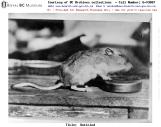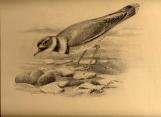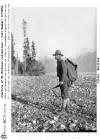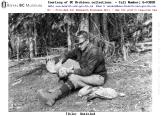2
Hamilton Mack Laing possessed a lifelong fascination for birds. While he never had any formal scientific training, Laing was nevertheless able to make a sizable contribution to Canadian ornithology. Over his lifetime he collected some 10,000 birds, mammals, and plants, which are now in museums, universities, and private collections around the world. He wrote 24 scientific articles for major ornithological periodicals, not to mention close to 700 articles for popular newspapers and magazines about various aspects of natural history.4
Laing's involvement with birds began on his parents' Manitoba farm. There, he learned some basic taxidermy from his father, as well as how to shoot a gun. Laing was given the role of "game-warden" on the farm, an experience which would mould his later understandings of nature and lead to his belief in the need for humans to assume a regulatory role therein.5
''The Taverner Party'' of the 1922 ornithological field season.31 May 1922
Vaseux Lake, British Columbia

7
In any case, Laing developed both as a talented photographer and as an expert marksman. He came to believe that the advancement of science in the study of birds could best be served by the procurement of a comprehensive collection of specimens for serious future study.9
To this end, Laing was hired frequently throughout the earlier years of his life to participate in collecting expeditions, most often by the National Museum of Canada. He went on expeditions to Lake Athabaska, Mount Logan in Alaska, and Japan, not to mention numerous field seasons spent throughout BC, on Vancouver Island and in the Interior. Laing also worked as a freelance collector during the depression of the 1930's.10
Photograph of Perognathius Laingi, one of the two species of mouse discovered by Laing.19 January 1956
Comox, British Columbia, Canada

11
During his life, Laing gained a number of namesakes: Antennaria Laingii, a flower found by Laing in the Chitina River Valley; of two birds discovered by Laing, a long-billed wren called Telnatodytes palustris Laingii (although the name has recently been changed); and of two mice, one named Perognathus Laingii. Laing also developed a number of theories of bird migration and a comprehensive series of syllabic representations of bird-songs.12
Charcoal sketch of a killdeer, done by Laing at the Pratt Institute.1914
Drawn in Brooklyn, NY, USA




